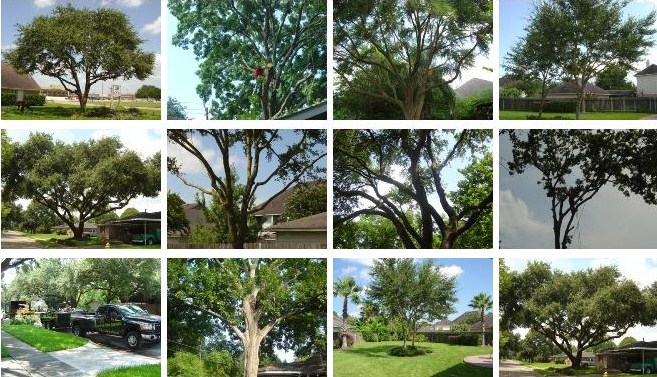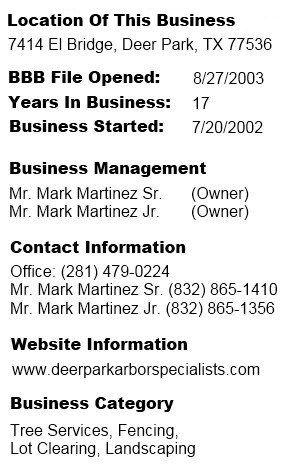Hazard Reduction: Removal of broken, dead or structurally branches that are in risk of damaging a specific target.
Crown Cleaning: Removal of dead, dying or diseased branches, water sprouts and structurally weak branches.
Crown Thinning: Removal branches to allow light penetration, wind flow and reduce weight in order to relieve stress from branch unions, approx. 20% of green foliage. Considered to be an effective pruning practice throughout the year, depending upon species and climate and.
Crown Raising: Weight reduction at branch endings in order to allow branches to rise to a natural, upward direction. 8-10′ above lawns, 12′ above walkways, 14′-6″ above streets, and 4-6′ above homes and structures and utility wires.
Vista Pruning: Removal of select branches to allow the view of a specific target or predetermined point.
Crown Reduction: Is used to contain the height and or spread of a trees crown. It is best accomplished when branches are cut back to a branch that is approximately 1/3 of its size. Depending upon species capabilities, this service is usually recommended to be done during a trees dormant season.
Crown Restoration: After a trees crown has been damage, Crown Restoration’s main objective is to improve structure and appearance.
Utility Pruning: Is the removal of branches or stems to prevent the loss of service, prevent damage to utility equipment, avoid impairment, and uphold the intended usage of utility facilities. Standard utility clearances are 4-6′ from wires and utility structures.
Structural Pruning: Techniques are used for pruning young trees or trees that have not been pruned in many years. Young trees that are pruned to promote good structures in earlier years are more likely to remain structurally secure with regular maintenance.
Complete Removal: When a tree warrants a removal, all necessary precautions will be made to insure that removal is completed safely and efficiently.
Stump Removal: All stump grinding is done to an average depth of 6-8″ below the existing grade, and is mounded back into the hole, spread for mulch or hauled at an additional cost. Deer Park Arbor Specialist is not responsible for damage to underground utilities, sprinklers, or any buried wires while stump grinding.
Stump Rot Application: While chemical stump removers do effectively hasten the degradation process of a stump, they are not a short-term method of stump removal. Often the process of decay can take several years. Stump Removal is the cheapest and fastest way to rid yourself of that unpleasant eye sore.
Cable / Support Installation: Tree support systems help support the tree by limiting the movement of branches, leaders or the entire tree. This reduces the risk of injury to humans and damage to property by providing supplemental support for structurally weak areas of the tree.
Root Control System Installation: Typar Biobarrier root control fabric is a multi-year root control system that can be installed in the soil vertically, horizontally or as a surround to inhibit root growth for up to 15 years.
Fence Installation: Agricultural fencing, sound barrier or acoustic fencing, privacy fencing, temporary fencing, perimeter fencing, decorative fencing, boundary fencing, newt fencing, pest-exclusion fence, pet fence, pool fence
Yard Services: Lawn care is just taking care of the lawn that has been established already. It may involve mowing, edging, fertilising, weeding, trimming of small trees and shrubs, removal of leaf and other debris from lawn, and watering grass etc.
Water Sprouts: Watersprouts are unwanted new growth shoots on the trunk or main branches of a tree or shrub.
Branch Collar: A branch collar is the often visible swelling in a woody plant that forms at the base of a branch where it is attached to its parent branch or to the tree’s trunk.
Root Collar: If you cover your tree’s root collar with a mound of mulch and soil, you’ll bury the chances of enjoying a long-lived tree. Although time-consuming, root collar excavation is worth the labor to save your trees.
Wound Dressing: Tree wounds are common and the causes include: broken branches, impacts, abrasions and scrapes; animal damage; insect attack; fire; etc. Wounds usually break the bark and damage the food and water conducting tissues
Trimming: The main objective for trimming are to remove all dead, diseased, potentially hazardous limbs, to produce a proportionate canopy height, and prevent breakage so that the tree remains in healthy state.
Shaping: The objective for shaping is to produce a crown that is well rounded and even throughout the tree.
Selective Pruning: The main objective for selective pruning is to prune limbs to the customer’s discretion.
Crown Reduction (topping) – The main objective for a crown reduction is to promote stronger branch unions by removing weight at the endings of each branch and to contain a trees growth. This service is recommended in the fall and winter months when tress are dormant.
Property Line Clearing: The objective for line clearing is cut all branches that are enforcing into an area that a customer wishes to keep clear.
Removal – Dangerous and Non – Dangerous: When a tree is dead, dying or in poor location, removal of such trees may be warranted.
Stump Grinding / Root Shaving: All stump grinding is done to an average depth of 6″ below grade and is intended to prevent stumps from obtaining new growth. Root shaving is done to prevent tipping hazards etc.





